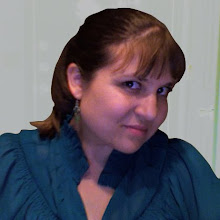Here is one of the interim attempts:

The logic behind this design is as follows:
• Each object was created using numbers, generated with a complex mathematical process (the average size for each object in the taxonomy was found; I then calculated the area or volume for each object in inches; next I calculated the square root of the area or volume; finally I took the first four digits after the decimal point of the square root and typed them out; and finally combined these typographical forms into the shapes you see here...phew!)
• Next the objects were extruded to give them a three dimensional feel. The shallow objects represent those that are the least tangible (these have also been made to be top-heavy in appearance); the deep objects represent those that are the most tangible (and therefore were made to be bottom-heavy).
• The objects are clustered and colorized by main category: GPS and Online Maps together in the front, Devices grouped together behind them, with Maps grouped together in the back. Teal objects are Maps (the lighter shade for maps that represent accurate distance, the darker shade for maps that represent non-accurate distance), gold objects are Devices (the lighter shade for devices that are electronic or digital, the darker shade for devices that are mechanical, and the red object is the GPS device which is a device and a map at the same time.
• Fences were constructed around the clusters of objects to represent ease of use—the tall impenetrable fence for the most difficult objects to use, the tiny corner stones in front for the easiest objects to use.
• Finally, to represent how portable the object is, I placed figures of monkeys atop each shape. The fewer monkeys on the shape, the more portable the object, the more monkeys the less portable.
Then after a few more iterations in look and feel, here is my final interface:
Interface for Interfaces: Navigation Interfaces... from Liese Zahabi on Vimeo.
Most of the visual language is the same, but the addition of pacing, time and interactivity helped simplify the initial look.
Overall, I wanted the user of this interface to have a sense of being lost, but not in a frightening or dire way. More the way one feels when traveling in a foreign city—it seems like things should make sense, but somehow they don't.
The user comes to the main screen, and has to look around to find the navigation hidden in the lower right. There are no labels or instructions, so the user chooses one of the icons. Then they are taken to a new (yet strangely the same) screen. As they explore the objects, they begin to click on them to find that some can be flicked off the screen. The objects that fly the farthest and fastest are the least tangible—those that simply rock and stay put are the most tangible.
Then the user navigates to another screen: this time all the objects are covered by clouds and fog. As the user rolls over the fog, some of it moves away. The fog represents ease of use—the objects easiest to use can be completely uncovered, those hardest to use remain obscured.
Finally, the user navigates to the last screen. Now as they click each object, it grows so the user can inspect it more closely and count the monkeys on top. The objects with the most monkeys are the least portable.
This project was indeed an arduous exercise in logic. However, the great benefit for me was to start out in a very regimented, rational frame of mind, and then attempt to abandon that frame and create something much more abstract and interesting. This was certainly very far out of my comfort zone, but the end result was both surprising and exciting for me. The push and pull and experiment in exploration has my mind spinning off in a million new directions. And working with interactivity and time (even in this very rudimentary way) was energizing and engaging. I'm looking forward to more work in this vein.


nice work!
ReplyDelete